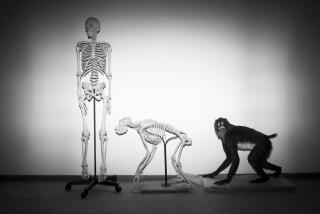Finch Beaks Say Darwin Was Right
Charles Darwin developed the theory of evolution by observing finches on the Galapagos Islands and speculating how each type developed distinct characteristics to take advantage of local conditions.
Now, researchers studying the same types of birds have for the first time observed competition-driven evolutionary changes occur from start to finish in the wild, according to a report published Friday in the journal Science.
Princeton University evolutionary biologists Peter and B. Rosemary Grant have been studying Darwin’s finches on the Galapagos Islands for more than 30 years.
Their report describes a process that was previously only speculated about and observed in laboratory experiments.
The medium ground finch, Geospiza fortis, has a variety of beak sizes, allowing it to eat different sizes of seeds.
On the island Daphne Major, this species faced little competition until 1982, when a larger type of ground finch, Geospiza magnirostris, moved in.
Both G. magnirostris and large-beaked G. fortis birds relied on large, hard seeds for food. The G. fortis with smaller beaks ate small seeds from different plants.
This was the status quo until a drought in 2003 caused a seed shortage.
The G. magnirostris were faster at eating the large seeds, and the large-beaked G. fortis could not compete. About 85% of them died.
The small-beaked G. fortis, on the other hand, faired better because of the lack of competition for smaller seeds.
Breeding among the small-beaked birds has cemented this trait in the G. fortis population, and the average beak size in the population is now about 5% smaller than before the drought.
“It’s very satisfying when something you thought was going on all along is actually shown in the wild,” said Lukas Keller, an evolutionary biologist at the University of Zurich in Switzerland who was not connected with the research.





